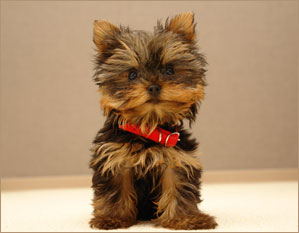Hi Pet Blog Readers! As we eagerly anticipate the weekend, we have an article from guest blogger Sam Buddy. He has written a nice post about bringing a new dog into your home. Housebreaking a new pup or dog can be a trying task. Sam has a few ideas that should help you get prepared for the new addition to your home. If you have any questions or comments, or any new puppy housebreaking ideas of your own, let us know in the comments section. Have a great weekend!
____________________________________________
He’s so fluffy, you could die! The latest addition to your family, a lovely, furry little thing that can literally turn you into that overexcited little girl in the movie “Despicable Me” – he’s so great for cuddling and nuzzling. All of you are likely to be blindly in love with the puppy for, at most, a week. After that, all members of the family will be pointing fingers at who should have the turn to take the cutie out for a tinkle or a poop session. You all love the pup dearly but he will prove to be quite a handful and a big challenge for the family.
One of your responsibilities as new pet owners is to housebreak your pup. This way, before his natural temperament completely takes over and habits form, you can lead him to the right path of development that will not only benefit him but also your whole family. To housebreak the doggie and protect your home dynamics and relationship, here are tips from trusted professional breeders of purebreds and designer dogs, Chevromist Kennels.
- Do your homework. Learn more about the specific breed of your puppy because their breed will determine their characteristics and developmental needs. Knowing these things will allow you to modify your own behaviours as primary care providers, and even your home design.
- Designate places for your puppy’s daily routine. Chevromist advises pet owners to make sure the dog has a safe place to relieve himself. Over time, this specific area will tell your dog that it’s where he can do his “business” comfortably.
- Install convenience and safety features for the dog. These will allow him to create and stick to the routine easier so even if nobody’s home to take him out to urinate or defecate, or give him food, he can still smoothly go about his daily activities.
- Be patient. Habit formation takes time and patience; dogs are sensitive beings and the way you deliver instructions and your reactions to them impact their ability to learn important lessons. Screaming at your pup or rushing him while he’s trying to relieve himself will stress him out and make it harder for him to work with a routine, to trust you, and at times, it may even cause him to lose control over his bodily functions.
- Reinforce good behaviour with rewards. This is an essential part of dog training and this doesn’t need to be an edible treat all the time; extra cuddles, loving coos, affectionate pats on the head will have the pup learning necessary behaviours, like going outside to relieve himself, that would earn him such treats.
About The Author: Sam Buddy is a pet owner and a freelance writer. He feels a special connection with his pets, most especially to his dog. He treats them as part of his family. He even brings his dog with him every time he travels. He spends most his time learning and sharing informative content about pets. Sam uses this resource for helpful pet care information: http://chevromistreviews.com.au/.
 That Pet Blog That Pet Place Pet Blog
That Pet Blog That Pet Place Pet Blog


I have two 7 week old puppies that understood the use of potty pads very early on. I love that, but I’m now wondering how to best transition them to go outside. I’m thinking maybe putting a pad just outside the door might work, but I’m also not sure at what age I should start that. Any thoughts?
When should I use a training lead? I found a [url=”http://www.petsupplieswarehouse.co.uk”]earthbound training lead on website but not sure if i need it. h’es 7 weeks old
Creating a designated place for my dog to alleviate himself seems like a good way to make sure that he doesn’t go on my carpet. My puppy is still really young, so he hasn’t been housebroken yet. I can’t watch him the entire day because I have a full time job, so I’ll try setting out some newspaper or a training pad where he can be free to alleviate himself when I’m not at home. Thanks for the tips!
Anytime Judy!